Tafelspitz is THE classic recipe of Viennese cuisine - and in contrast to most other famous Viennese dishes such as Schnitzel, Goulash, Apple Strudel and the like, it actually has its origins in Vienna.
In this article you will find a classic Tafelspitz recipe (boiled beef) with traditional side dishes as well as detailed instructions with pictures.
Cooking a Tafelspitz menu is not difficult, but there are often questions and uncertainties about boiling beef.
That's why I've collected all the important information and FAQs about preparing boiled beef for you in this article.
Here is the overview:
Jump to:
I have found a very good summary of the history of Viennese Tafelspitz here on the website of Viennese Hotel Schick.
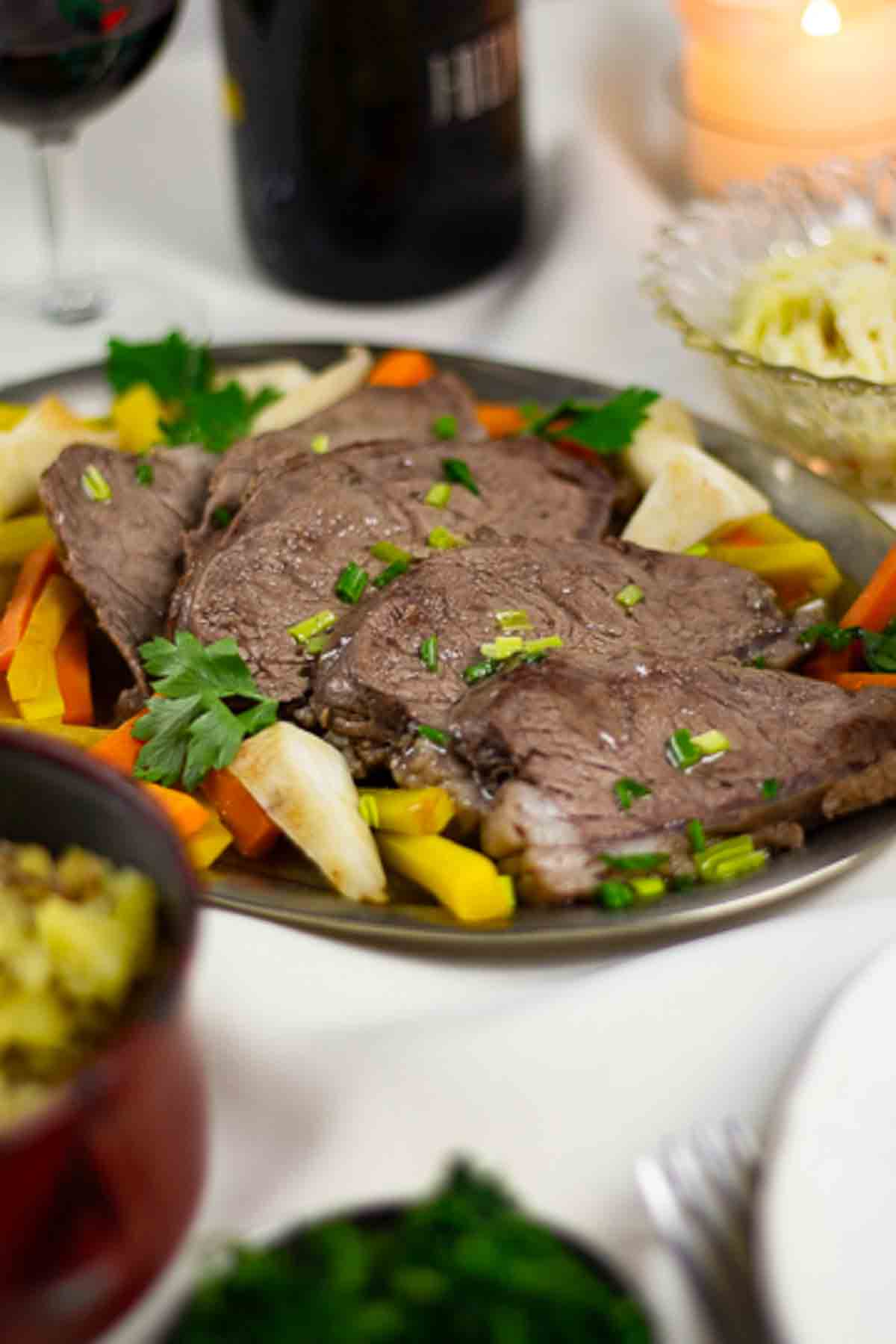
What is Tafelspitz and where can I get it?
- Tafelspitz is a beef cut almost only used by Austrian butchers. In English, it's called "Cap of rump". Tafelspitz is not the same as tri-tip or bottom sirloin primal cut as mentioned on other websites.
- If "Cap of rump" is not available at your local grocery store or butcher, you can use other beef cuts suited for boiling, like chuck, brisket, or shank.
- It's best to pre-order the meat a few days before cooking.
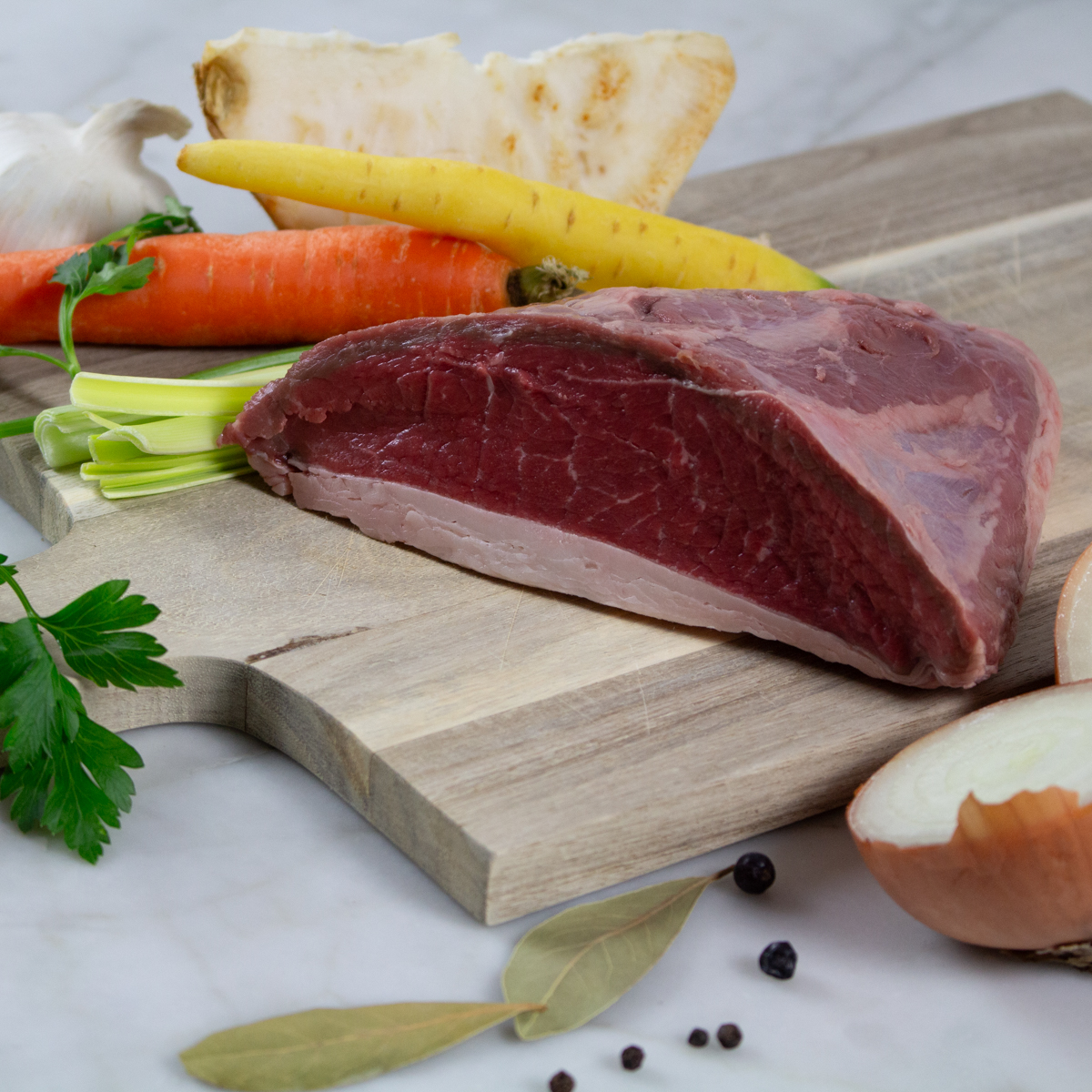
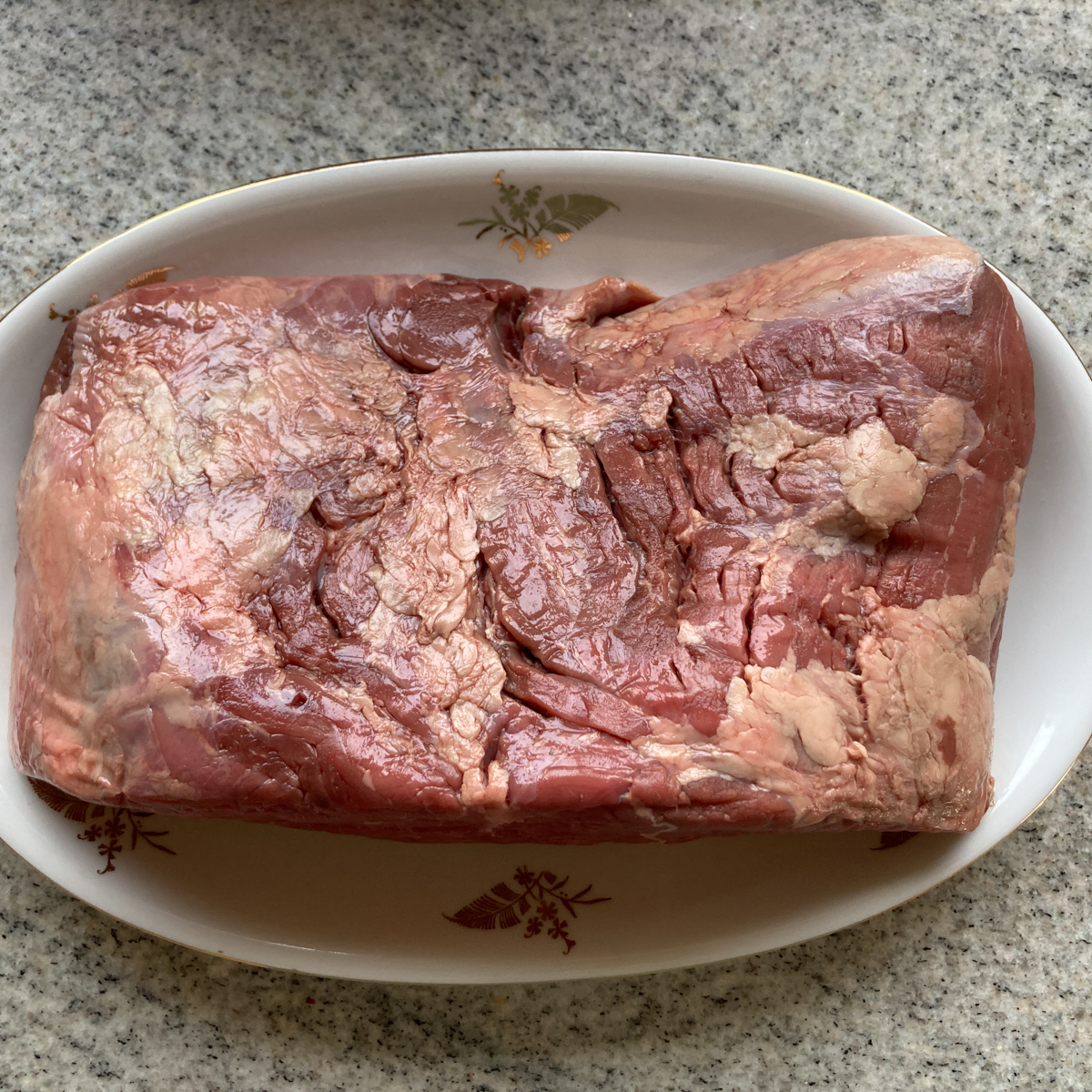
Preparing Tafelspitz in advance
You can prepare Tafelspitz very well 1-2 days ahead. In this case, it should not be kept in the soup. Wrap it in foil and store in the fridge.
Keep the soup in an extra pot.
When the soup is still cold, you can very easily remove the fat on top.
Before serving, heat up the Tafelspitz in the soup.
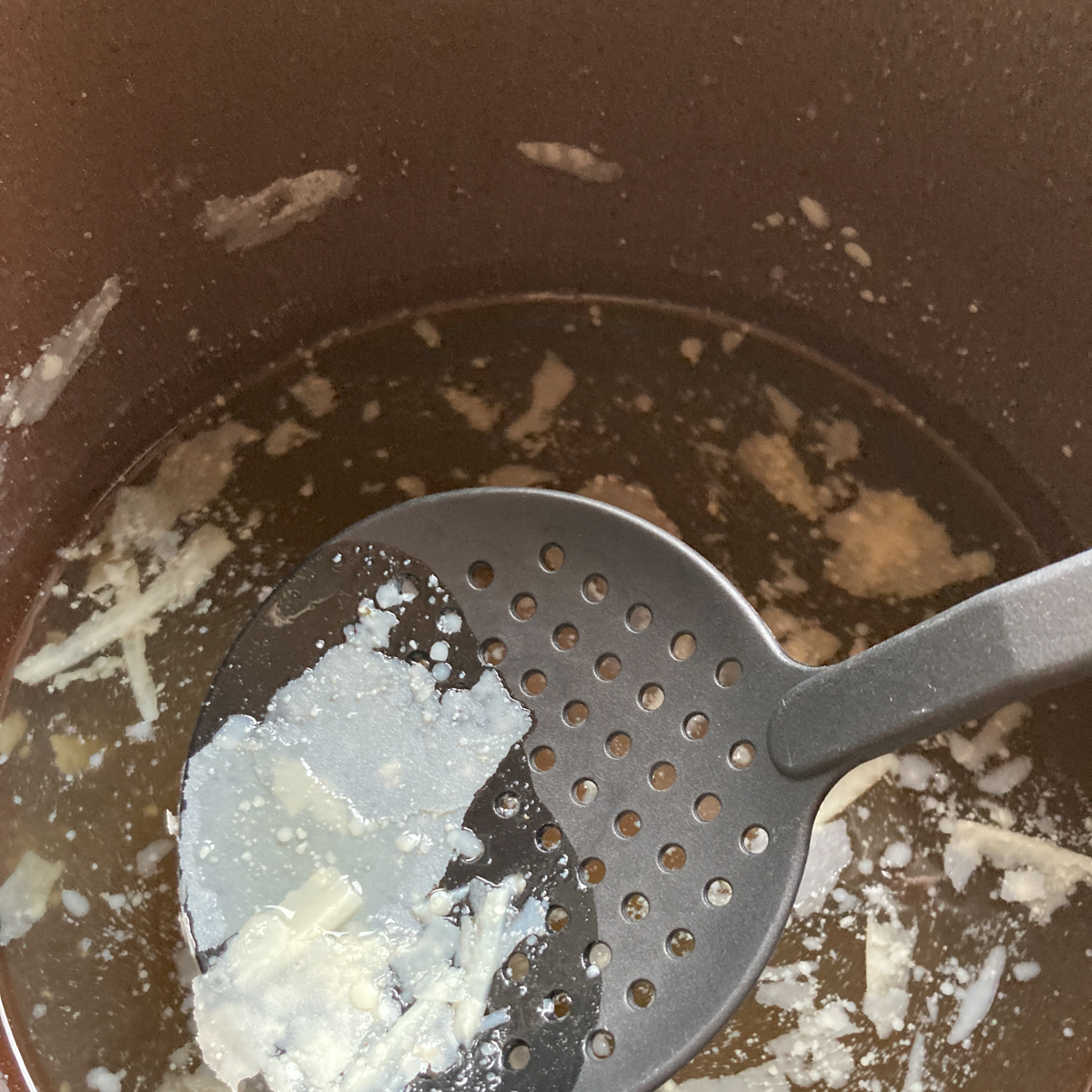
When the soup is still cold, you can very easily remove the fat on top.
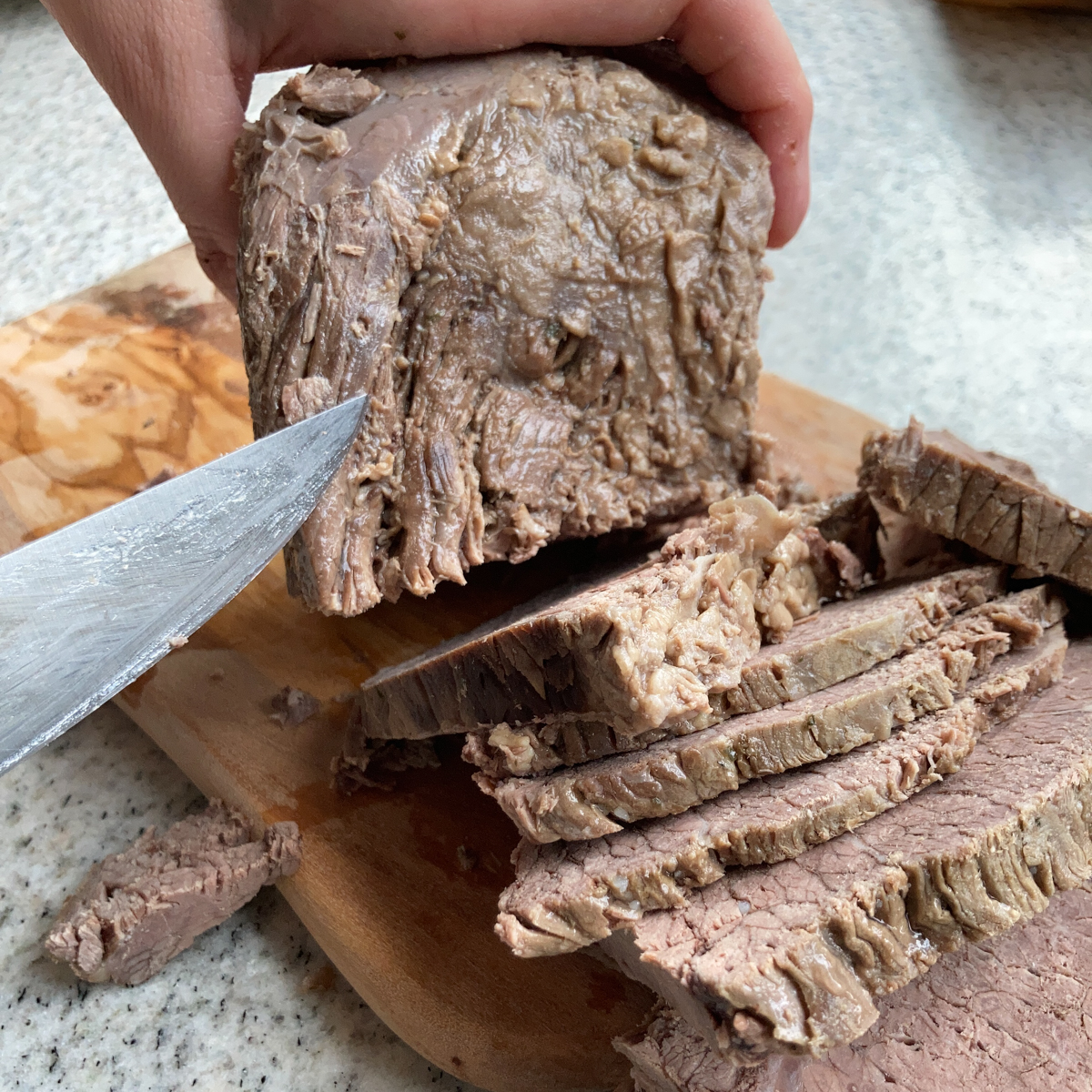
Cold beef is easier to cut.
How to cut Tafelspitz
Tafelspitz is cut about finger-thick against the grain.
It's best to cut boiled beef when the meat has already cooled down. Alternatively, you can briefly rinse it with cold water after cooking.
On the left you can see a slice of beef cut against the grain. On the right side two slices that were cut WITH the grain (i.e. the way it shouldn't be.)
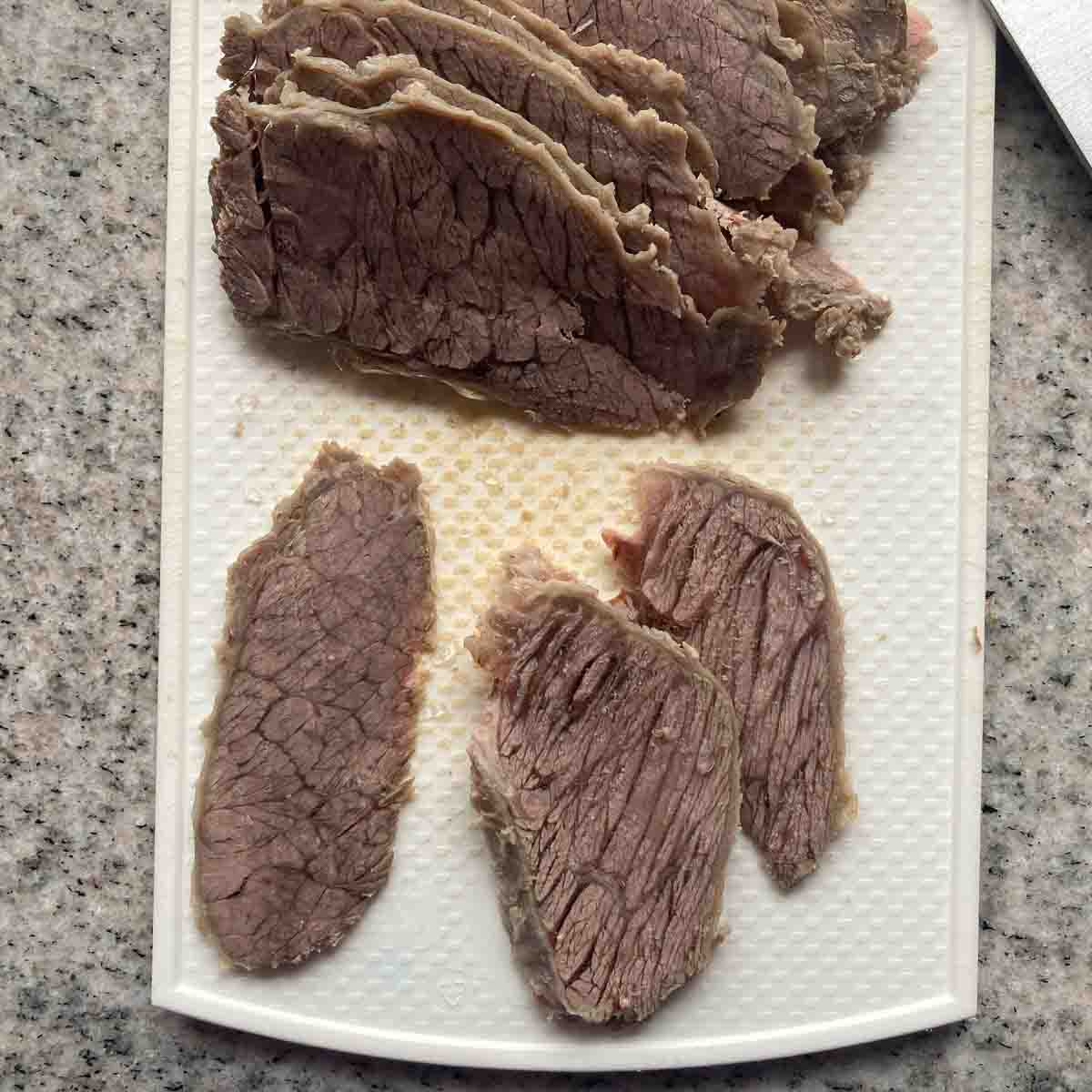
On some pieces of meat, the direction of the fibers may change over time. Then the cutting direction may need to be adjusted or sometimes smaller pieces need to be cut.
Freezing Boiled Beef
A raw, whole piece of beef can easily be frozen. It's best to let it thaw in the fridge overnight before cooking.
Already boiled beef is not particularly suitable for freezing because it dries out quite a bit when reheated and the meat is no longer as soft.
Zero Waste Tip
Leftover boiled beef can be stored well wrapped in the refrigerator for a few days. To warm up, simply place the slices in hot soup.
It is also perfect to fry in a pan, for example with potatoes and onions, etc. In Austria, the traditional dish for leftover beef is a beef salad.
Tafelspitz can also be cut into small cubes and be served in a beef broth.
The beef soup that is made when boiling the beef can easily be frozen in portions. I wait until it has cooled down a bit and then fill it into screw-top jars. Be careful, the glass can crack if it comes into contact with water that is too hot. (To defrost, do not put the screw-top jar in the microwave.)
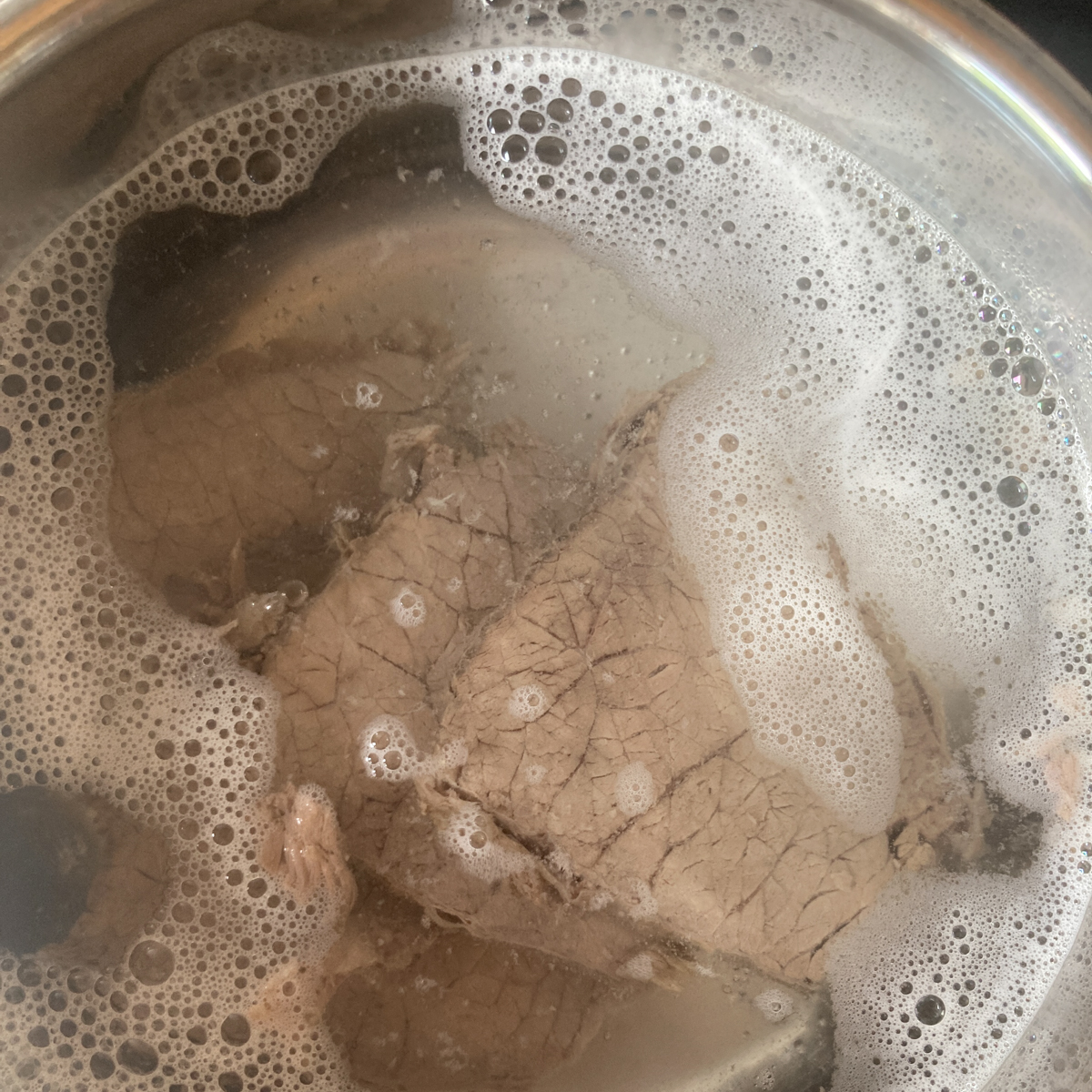
Warm up sliced boiled beef in hot soup.
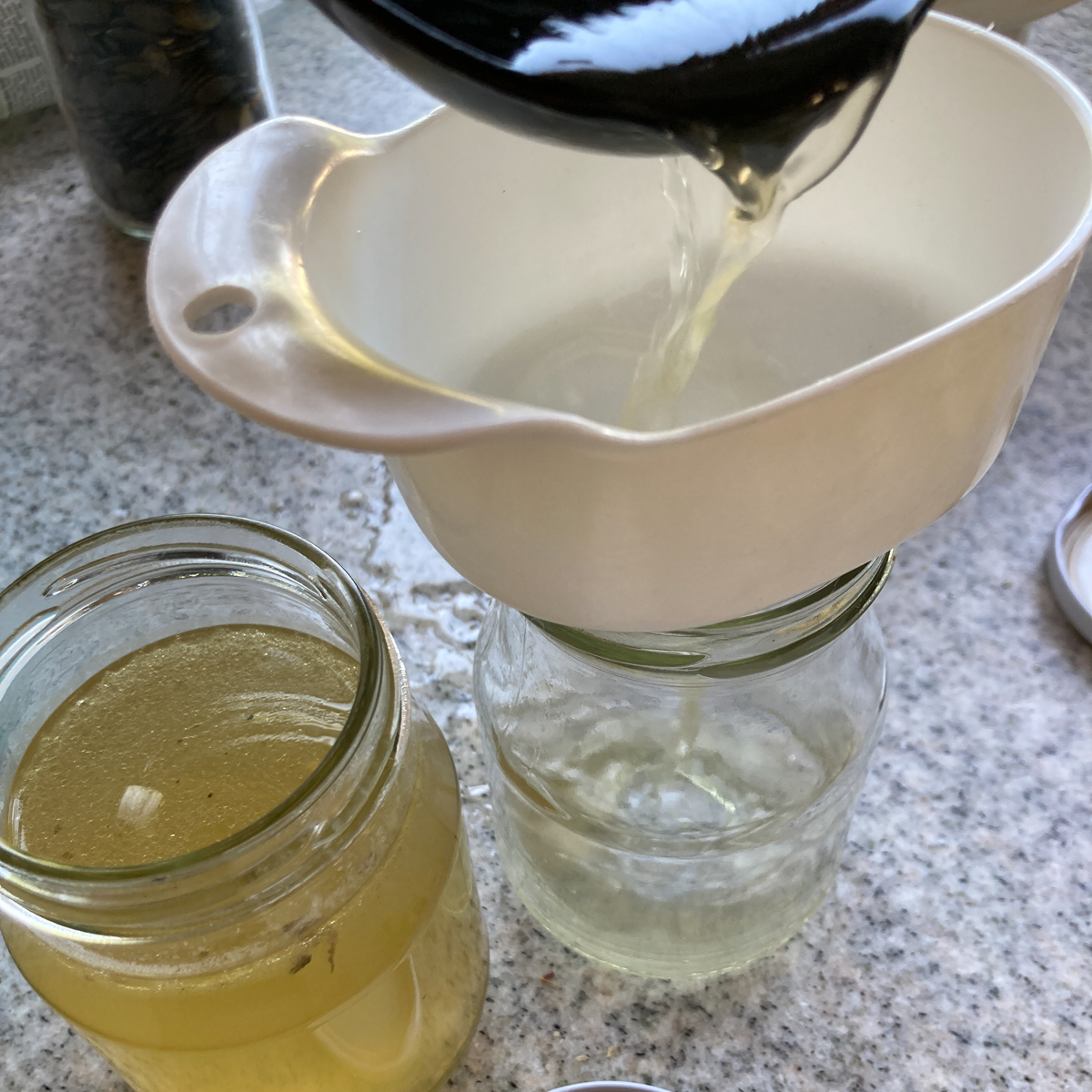
Leftover cooled beef soup can be frozen in screw-top jars.

Side Dishes for Viennese Tafelspitz
Since boiled beef was a very common meal in historic Vienna, there are a variety of traditional side dishes with Viennese Tafelspitz. For many of these side dishes, the beef soup, which is made through boiling the Tafelspitz, is an important ingredient.
I like to serve with boiled beef:
- creamed spinach
- Apfelkren (Horseradish Sauce with apples)
- Semmelkren (Horseradish Sauce with white bread and beef broth)
- Chive sauce: Mix 1 cup of sour cream with ½ cup of water, add a little salt and mix with 1-2 tablespoons of chopped chives
- Dill sauce (like chive sauce)
- the root vegetables cooked in the soup
- 2-3 types of seasonal vegetables. I really like to make simple oven-baked vegetables with just a bit of salt, oil and garlic or herbs, for example pumpkin slices, wedges of red beets, carrots, yellow beets, celery, parsley roots,…
Other traditional side dishes for Tafelspitz include:
- Steamed vegetables in the Viennese style - refined with a white roux, for example boiled green beans with dill and a white roux, cabbage, kohlrabi,..
- All kinds of pickled vegetables such as pickled cucumbers, pickled beets, pearl onion, etc.
- Various salads such as pine salad, bean salad, coleslaw
- Various sauces, for example horseradish sauce, caper sauce,...
Instructions Step By Step
Preparation: Blanch bones
If you want, you can blanch the beef bones beforehand. To blanch, briefly place the bones in boiling water. Strain through a sieve and rinse. This removes small bone splinters, turbidity and dirt.
You can also prepare boiled beef without beef bones.
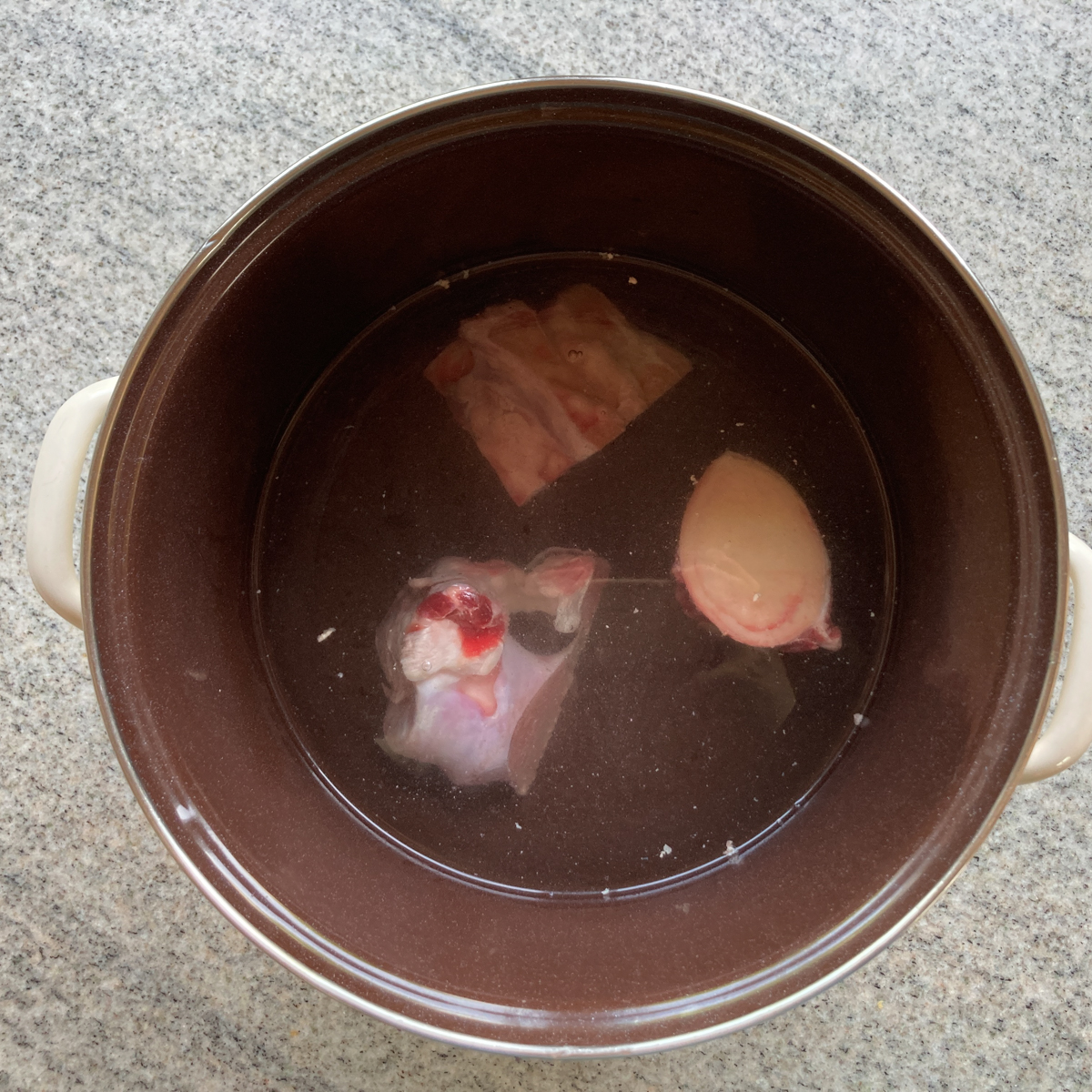
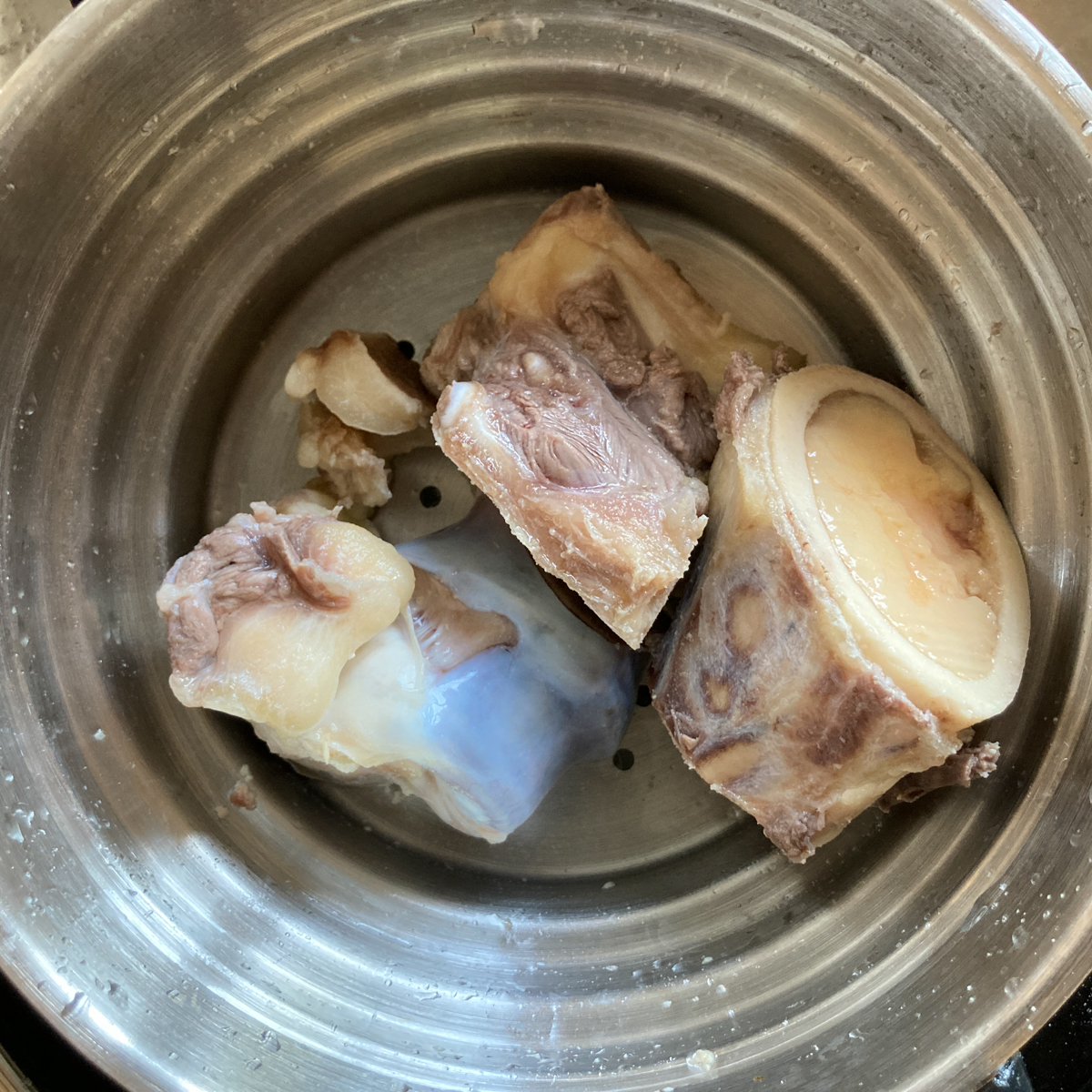
In the past, bones were blanched to remove dangerous bone fragments. However, bone splinters have become rare and blanching is no longer strictly necessary except to remove cloudiness from the soup. If the soup is strained through a sieve after cooking, you can also prevent any bone splinters when you eat it.
However, since blanching the bones also helps produce a clearer soup, it is still popular. This has minimal impact on the taste, but the soup becomes nice and clear and has a more beautiful color.
Step 1: Bring soup to a boil
Halve the onion and fry it in a pan without oil until the surfaces are dark brown or almost black.
Place the (blanched) beef bones with onions, garlic and spices in a large pot of cold water and bring to the boil.
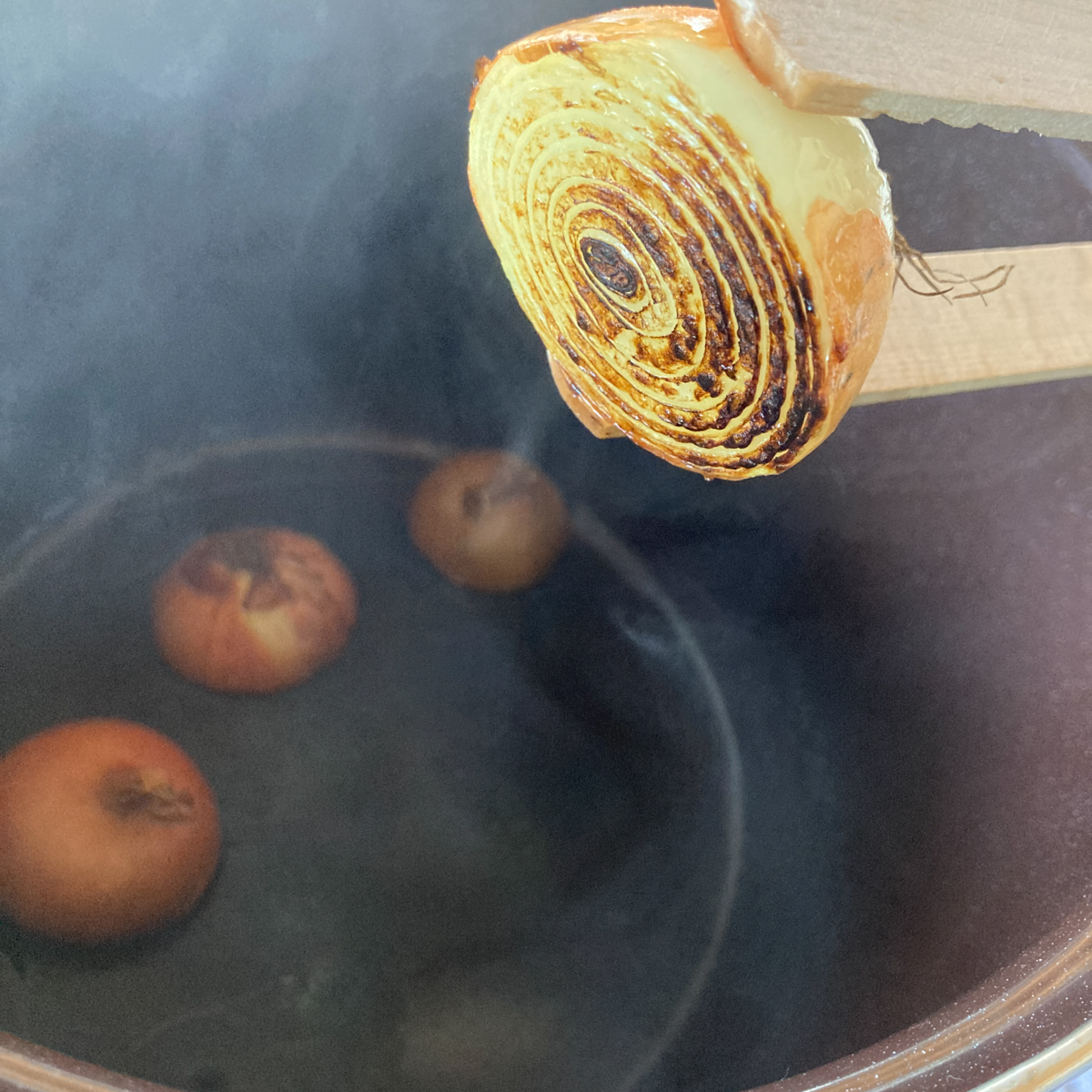
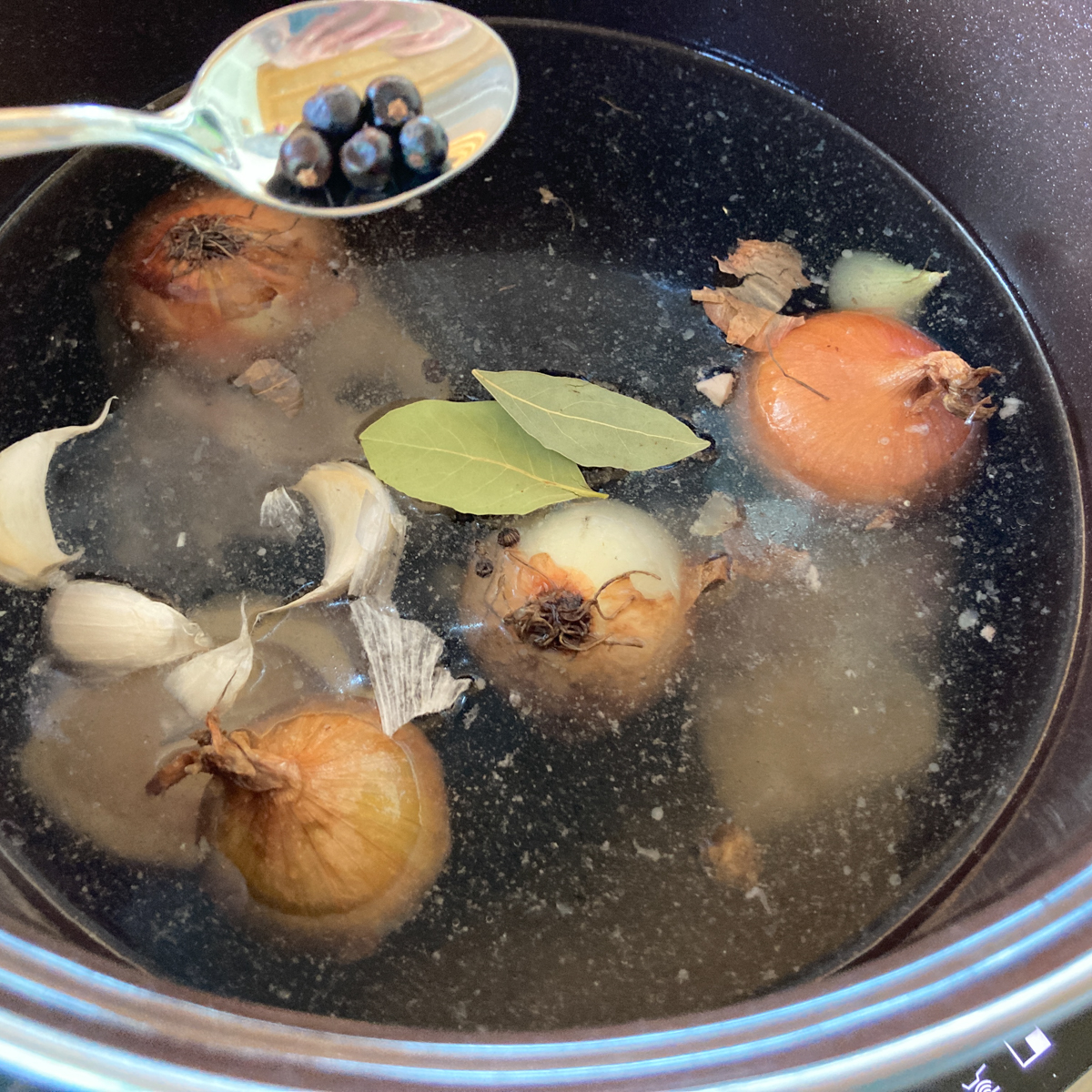
Tip: For additional roasted flavors, the bones can also be dark-roasted before making the soup. This can be done either in a coated pan without oil, in the oven, or in the soup pot itself. (But it burns more easily if the pot is not coated.)
Step 2: Put beef into boiling water
As soon as the water boils, the beef can be added. It should be completely covered by the soup. Depending on the quality of the meat and weight, the beef must now simmer in the soup at a medium to low temperature for a total of around 3-4 hours. (Check temperature every now and then.)
I cook the boiled beef with a lid on the pot so that too much of the soup doesn't get lost.
If you want, you can skim off the gray foam that forms on the surface of the soup. This gives you a clearer soup without cloudy substances. However, this has little influence on the taste.
Step 3: Soup Vegetables
The soup vegetables, especially the carrots, should not cook in the soup for too long, otherwise it will become too sweet. Approximately 45 minutes to 1 hour of cooking time should not be exceeded.
Therefore, either add the vegetables to the soup at the beginning and then remove them after 1 hour, or only add them to the soup 1 hour before the end of the cooking time.
The bay leaves, peppercorns, juniper berries, etc. can cook all the time.
Onions and garlic also add some sweetness to the soup, but given the large amount of water in the pot, that has never “harmed” the soup for my taste.
Step 4: boil beef
After a total of about 3-4 hours of cooking time (for about 4 lbs / 2 kilograms of boiled beef), the meat should be tender. If you are unsure whether it is really soft, you can prick it lightly with a fork. When the meat is tender, you should be able to press the fork into the meat very easily.
Step 5: Sieve soup
When the boiled beef is cooked until soft, strain the soup into another clean pot. I like to take the larger parts like meat, bones and vegetables out of the pot first.
Then I strain it through a sieve into another pot for the first time.
In a second step, I strain the soup again through a cloth. This has the advantage that too much doesn't end up in the cloth at once and then become "clogged".
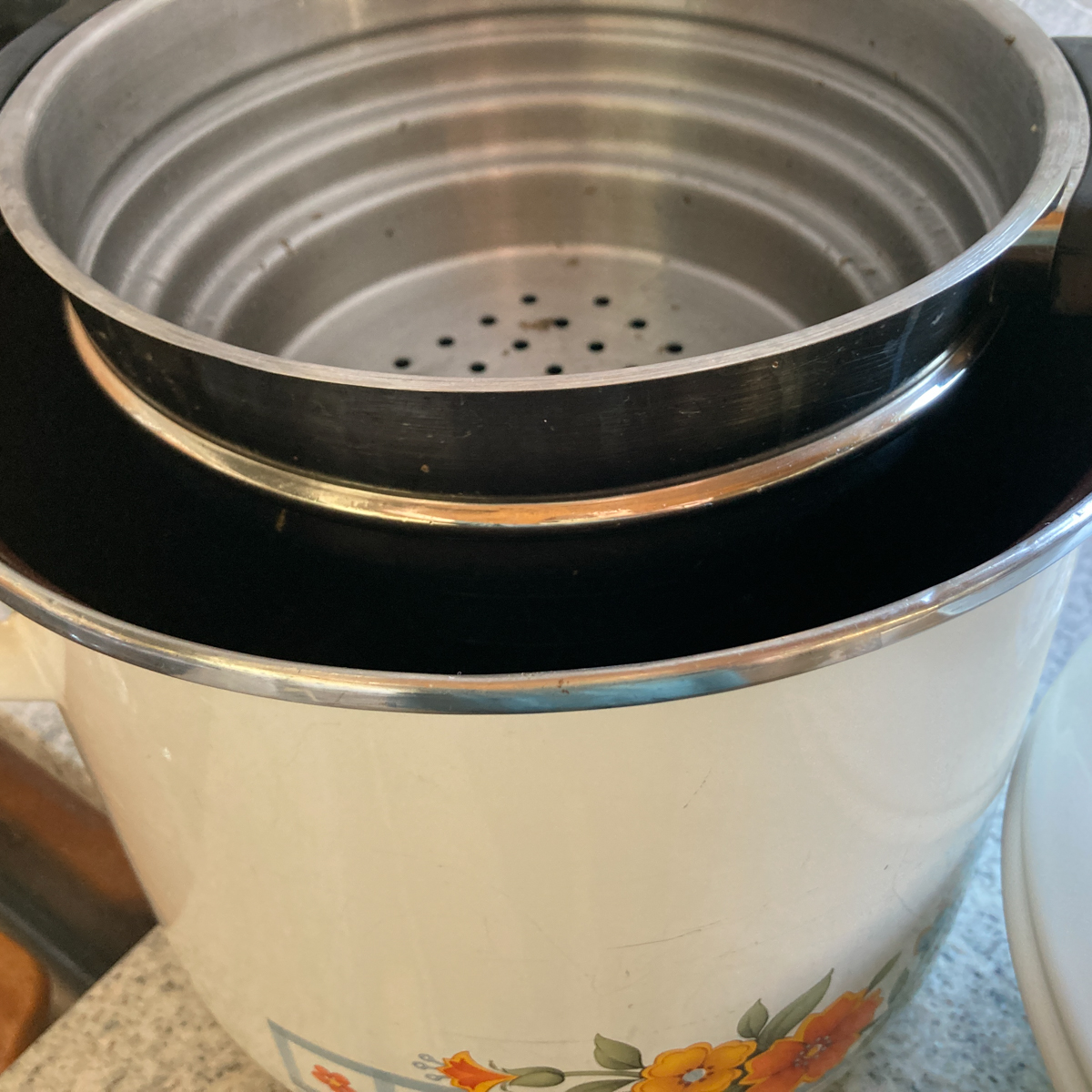
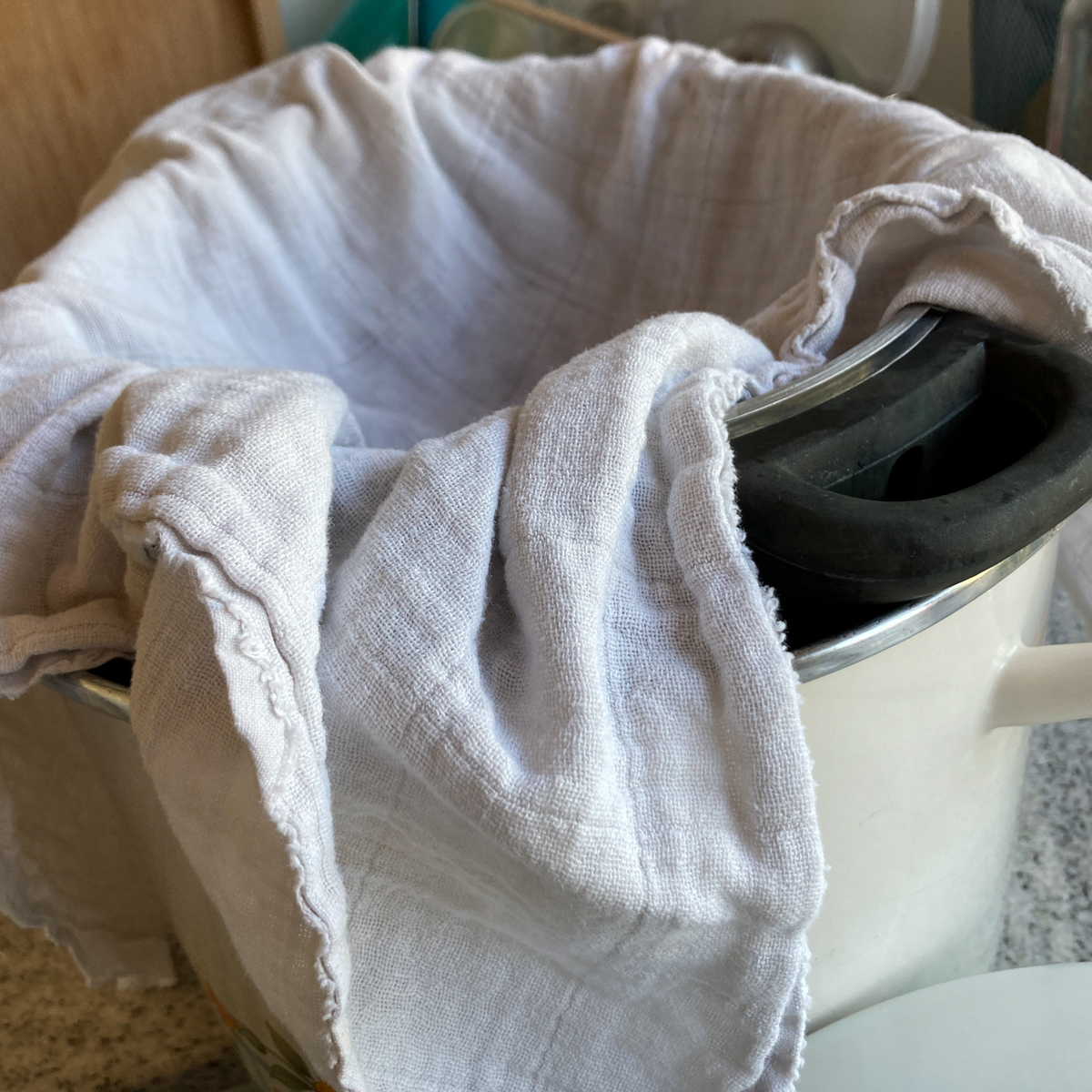
I like to serve the soup with thin soup noodles. Traditional Austrian soup garnishes include thin pancake strips, semolina dumplings, liver dumplings, etc.
Step 6: Cut beef
Just before serving, cut the boiled beef into finger-thick slices against the grain.

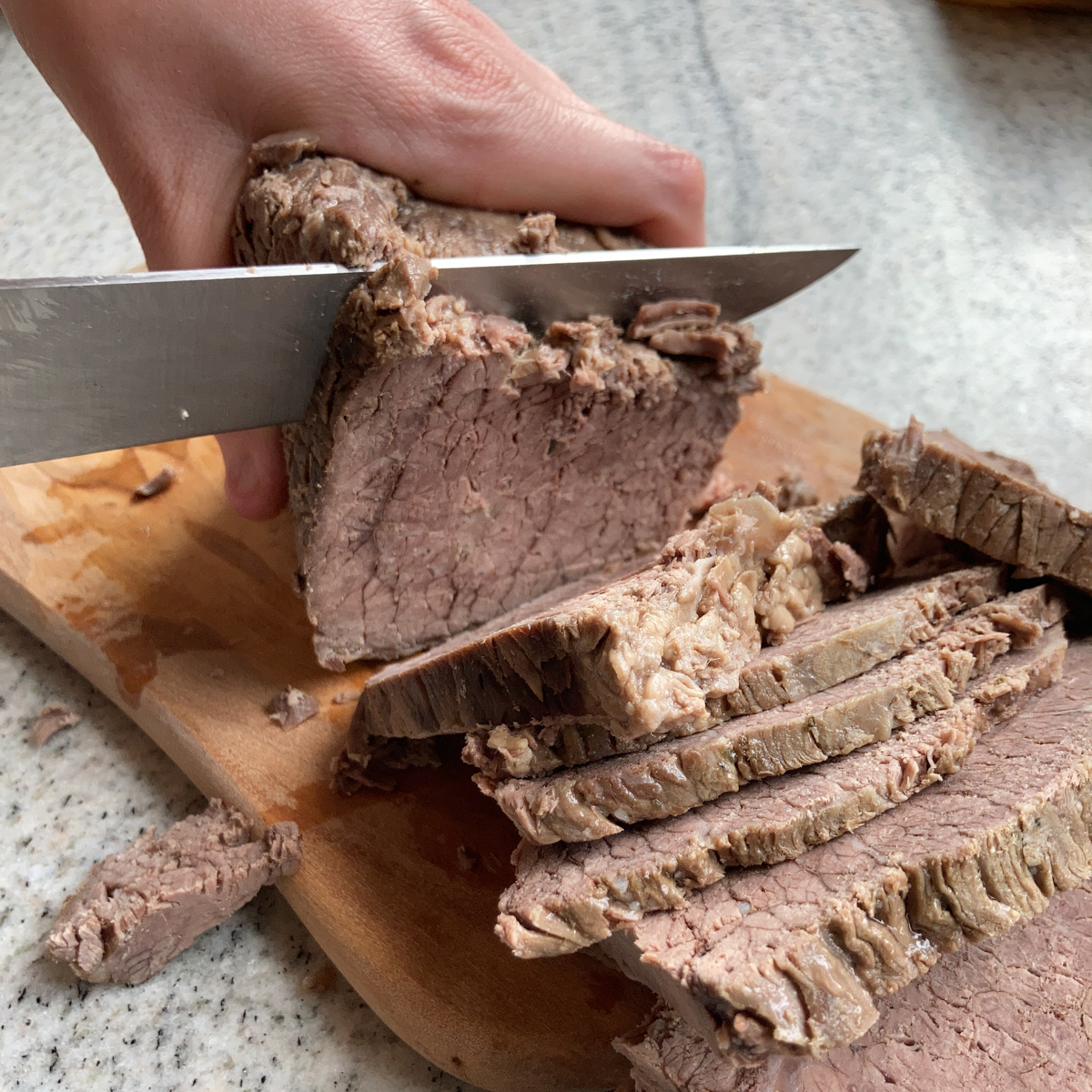
Step 7: How to serve Tafelspitz
Place the sliced boiled beef in a fan shape on a deep serving plate or in a soup pot. Garnish with the finely chopped soup vegetables. Pour with some of the hot soup. Serve sprinkled with coarsely grated sea salt and chives.
Position the various side dishes around the plate with the boiled beef.
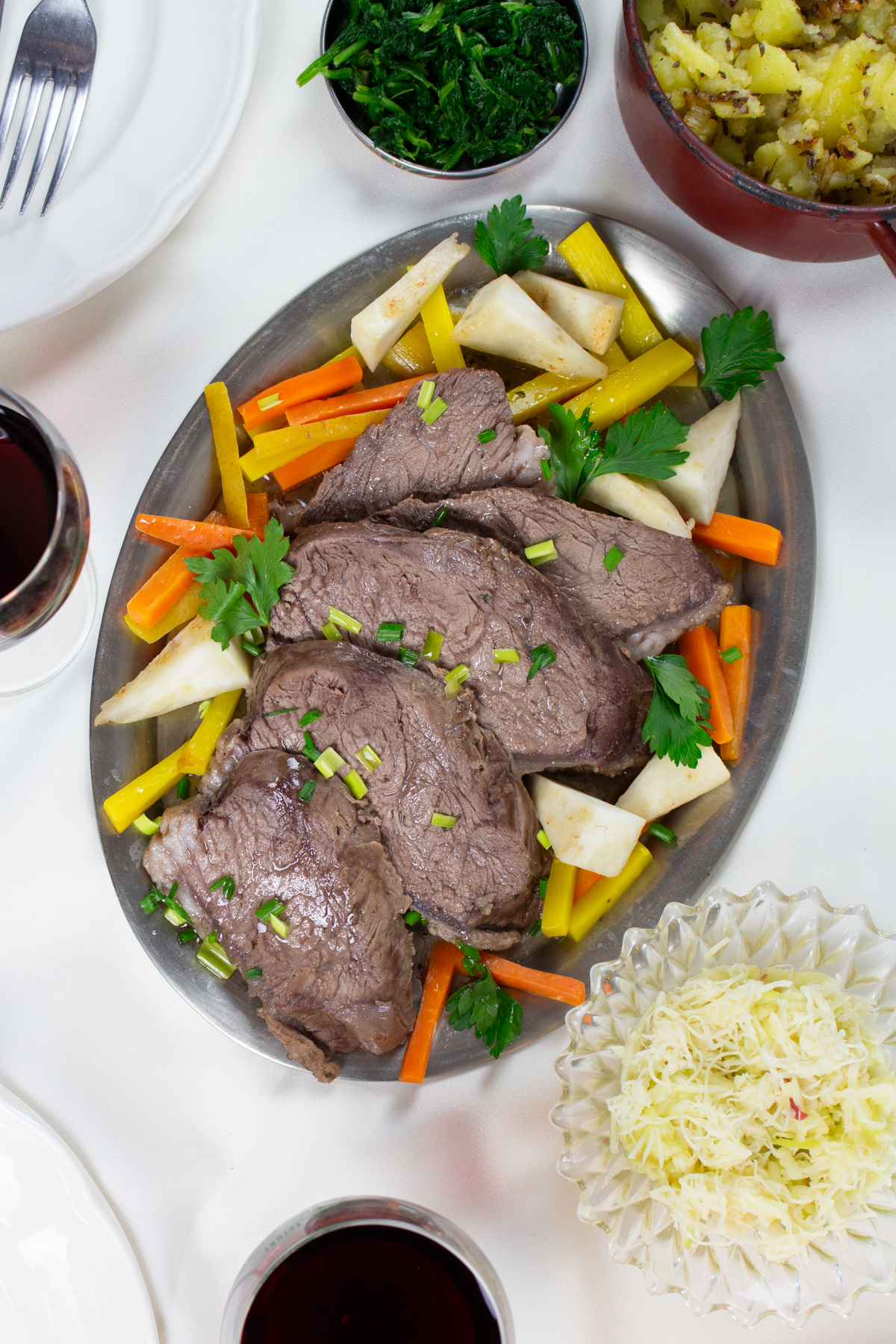
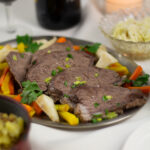
Traditional Viennese Tafelspitz Step By Step
Zutaten
- 4 lbs Tafelspitz (cap of rump) ~2 kilogram
- 1 lbs beef bones ~500 gram
- 1 teaspoon pepper corns
- 3 bay leaves
- 1 teaspoon juniper berries
- 1 tablespoon lovage
- soup vegetables 2 carrots, slice of celery root, 1 parsnip, 1 turnip, bit of leek, parsley
- 2 brown onions
- 4 cloves garlic or more
- coarse salt for serving
- chives for serving
Anleitung
- Blanch the bones: place the bones in a pot and pour with hot water. Strain the water and rinse the bones in a sieve with warm water.
- Add bones, all the spices and halved garlic to a large pot. Bring to boil with 3 liters of cold water (~12 cups). Don't add salt yet.
- Meanwhile, halve the onions and roast in a pan until dark brown. Add to pot. Don't peel onion. This improves the taste and adds a nice brown color to the broth.
- When the water boils, add the meat. It should be fully covered with the liquid. Add more water if necessary.Cook for 3-4 hours on medium to low temperature.
- 1 hour before it is finished, add soup vegetables. (You can peel them, but don't cut into small pieces yet.) Don't let the soup veggies cook in the soup for too long, otherwise it becomes too sweet.
- When the meat is tender, sieve. Save the beef broth in another pot.
- If you want an extra clear broth, sieve through a cloth.
- Cut Tafelspitz into thin slices, against the fibers.
- To serve, place slices on a plate and pour with some soup. The Tafelspitz should always be covered with soup, otherwise it will dry out. Garnish with chives and carrots. Sprinkle with salt.
(c) by Angelika Kreitner-Beretits / Vienna Sunday Kitchen
Oktober 26, 2023 Hast du das Rezept ausprobiert? Dann freue ich mich über deine Bewertung!! / Rate this Recipe!Nährwerte


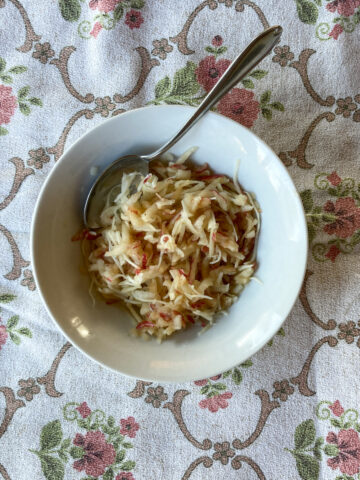
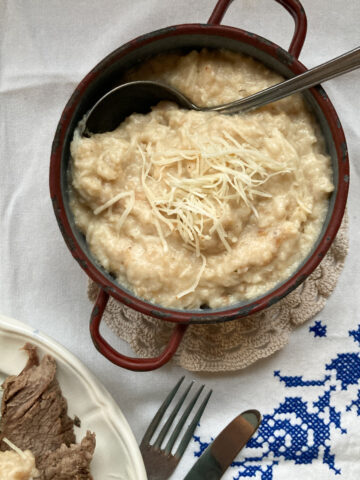
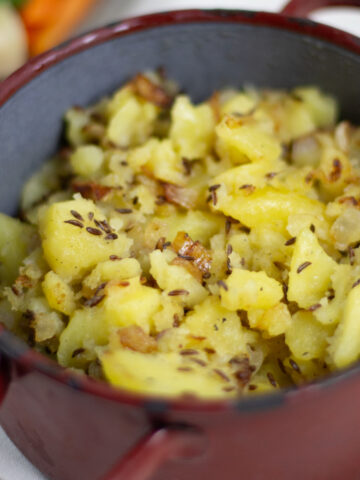
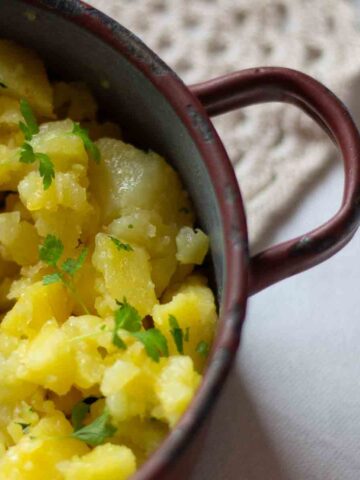
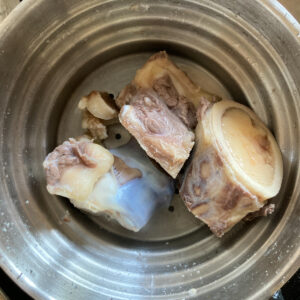
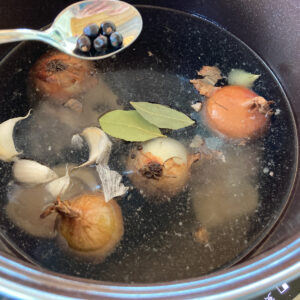
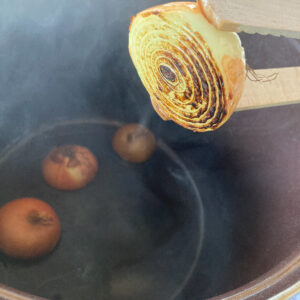
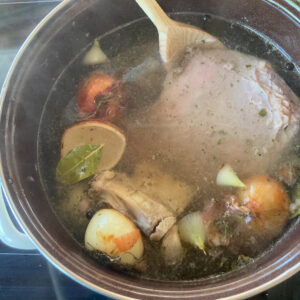
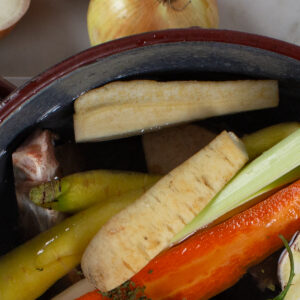
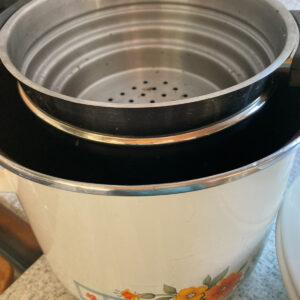
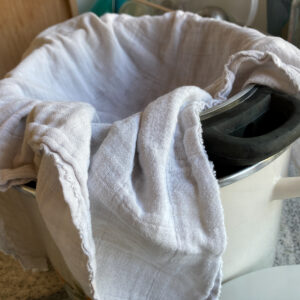
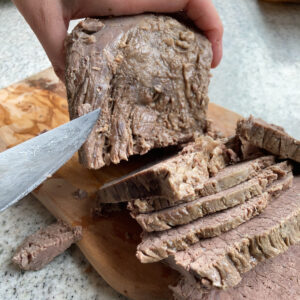
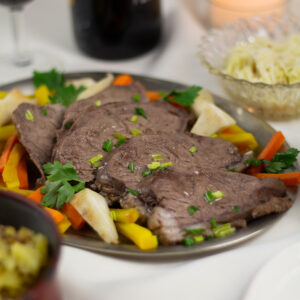
Ich freu mich über deine Rückmeldung zum Rezept in den Kommentaren!